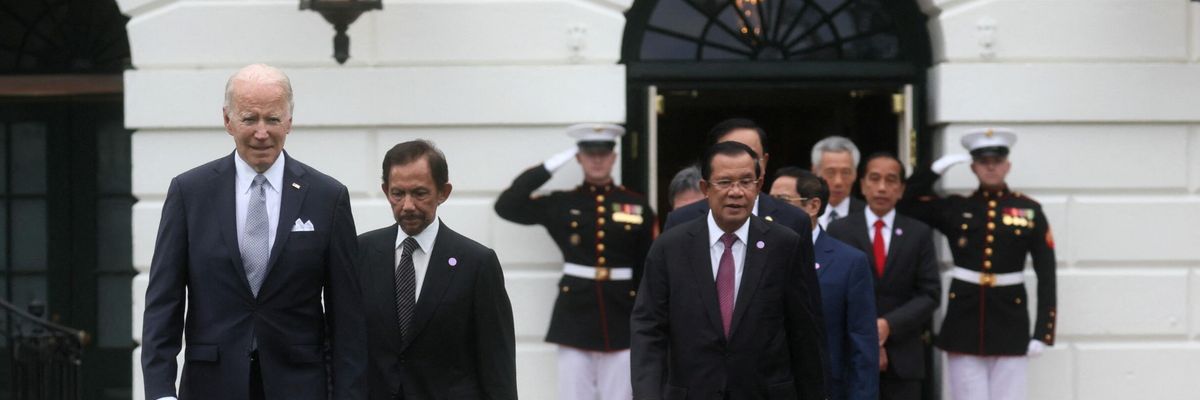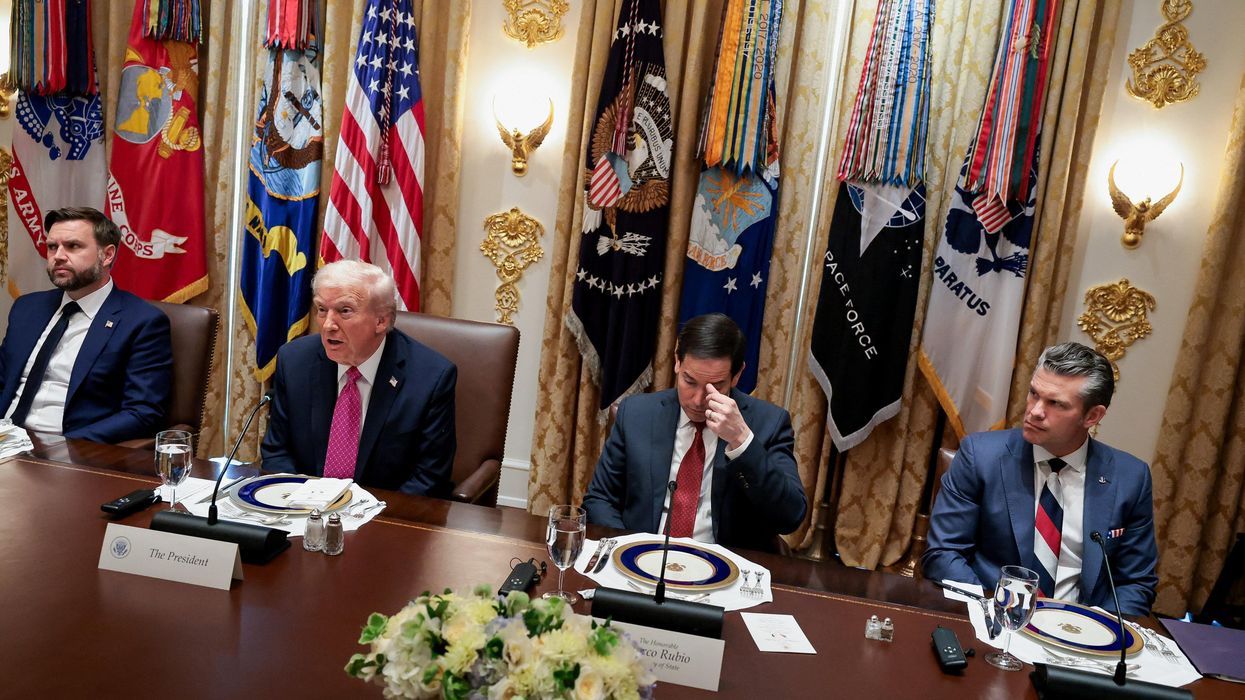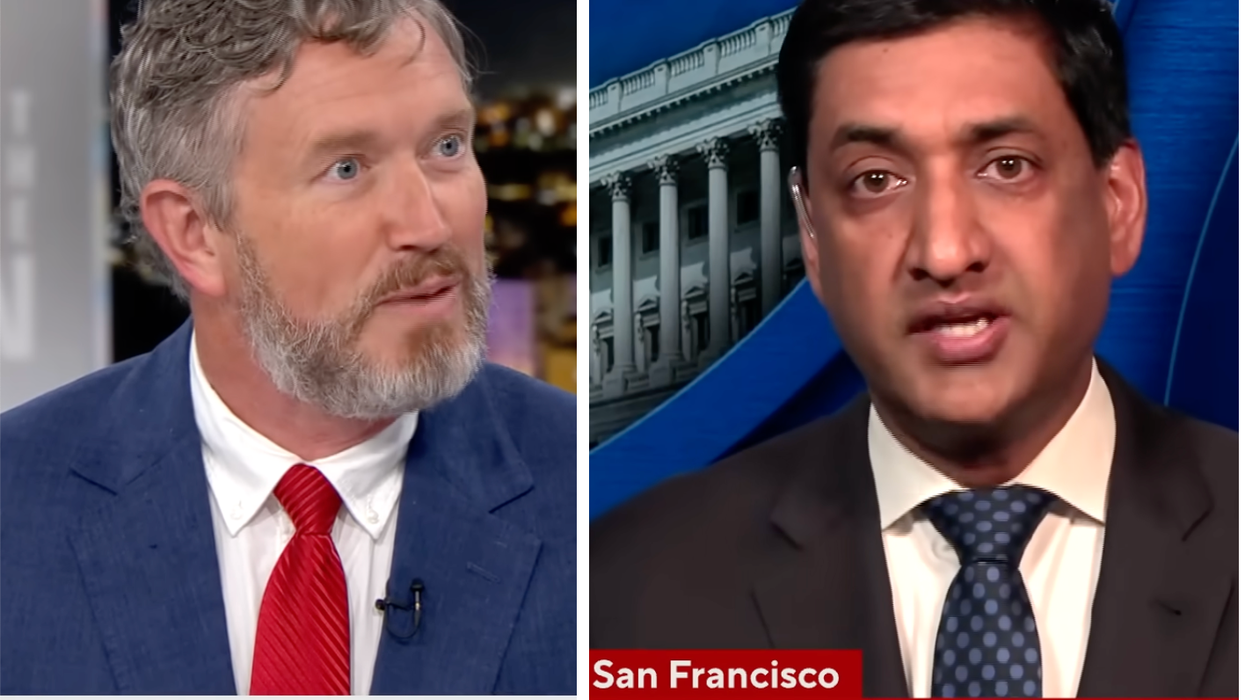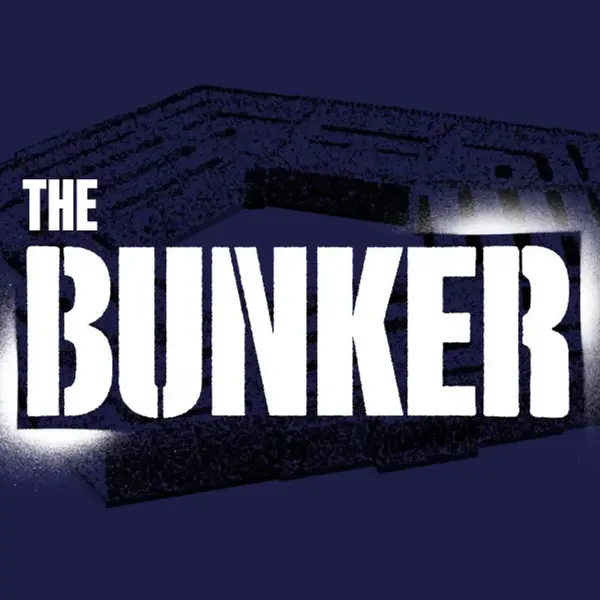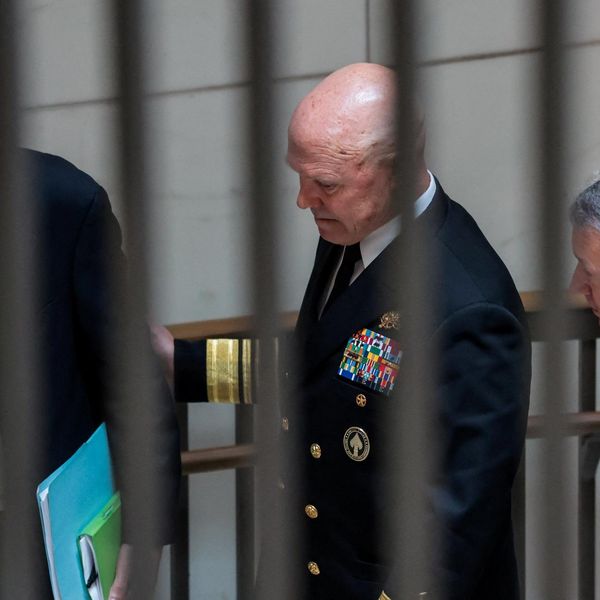Is the U.S. strategy of reducing Russian and (especially) Chinese influence in Southeast Asia working? If the recent summit with ASEAN (Association of Southeast Asian Nations) leaders in Washington is any indication, the answer has to be a no.
This speaks to the continued futility of a strategy of attempted exclusion in a time of greater autonomy and assertion in the region and the Global South more generally. For furthering American interests in the region, President Biden may be better served by a math lesson in addition rather than subtraction.
Much media attention after the summit was focused on the fact that the joint statement failed to condemn Russia for its illegal invasion of Ukraine. That should hardly have been a surprise. ASEAN states largely voted for the initial UN General Assembly resolution condemning the Russian invasion, but they balanced that with signals that indicated a desire for positive relations with Moscow. Singapore was the only ASEAN state that joined the United States in levying sanctions on Russia. Indonesia has made it clear that it is in no mood to exclude Russia from the G20 summit later this year (though it will also invite Ukraine).
The summit’s joint statement mentioned “freedom of navigation” and “open, inclusive, and rules-based regional architecture,” but did not include Washington’s pet phrase “free and open Indo-Pacific” (though President Biden used it in his media remarks.) China was not explicitly referred to in either the statement or in President Biden’s subsequent remarks. Countering illegal fishing was a key area of agreement during the summit, however— Chinese vessels have been major purveyors of this activity in the South China Sea. In that vein, the United States offered $150 million to the region, $60 million of which is to be directed toward strengthening coast guards of ASEAN states, and $40 million toward climate action.
There is much that ASEAN and the U.S. agree on, but when it comes to China there is a clear (if rarely publicly expressed) difference. Washington routinely stresses “ASEAN centrality” and has stated that it does not seek to force Southeast Asian states to choose between the United States and China. But Washington’s actions on the ground tell a different story.
The United States’ played a key role in reviving the four nation Quad’s in 2017 and further strengthening it during the Biden presidency. The Quad is a grouping which also includes U.S. allies and partners Japan, Australia, and India with an implicit mission of countering China. Coupled with AUKUS, a three-nation pact explicitly military in nature, the U.S. Indo-Pacific strategy looks very much like a China-containment strategy that is building rival bloc-like structures that bypass ASEAN.
ASEAN states do have significant concerns about China. The Philippines and Vietnam have the most contentious maritime disputes. Chinese intrusions into Malaysian-claimed airspace and territorial waters and Indonesian-claimed EEZ have not gone down well in the region.
But the maritime disputes in the South China Sea are not a simple ASEAN v. China matter. Southeast Asian states have disagreements with each other. Taiwanese claims to the South China Sea are as sweeping as those of China’s — that is why both China and Taiwan rejected the international tribunal’s decision in the case won by the Philippines in 2016. While China has occupied and militarized some islands and features in the region, other regional states also maintain military facilities on other islands. In general, the contentions are holdovers from history with complex, interlocking claims, and no easy solutions.
ASEAN’s efforts to evolve a Code of Conduct with China to stabilize these disputes have been slow going, partly due to Chinese recalcitrance. But this hasn’t stopped Southeast Asia and China from segmenting off these disputes from their turbocharged trajectory of trade. China trades about twice as much in value with ASEAN as the United States does (though the U.S. leads on investment.)
Over a decade, Beijing’s Belt and Road Initiative has delivered major infrastructural projects that the region values, such as the Laos-China high-speed railway, multiple infrastructure projects in Brunei, metro rail in Vietnam, and others. The Quad in comparison has little to show over the five years of its second wind, apart from recent Covid vaccine deliveries to the region.
The United States has had no response thus far to China’s compelling economic story for Southeast Asia. Dismissing the BRI as a neo-colonial debt trap is a major exaggeration and does not resonate in the region. The core of Washington’s geo-economic strategy, we are told, is the “Indo-Pacific Economic Framework” to be unveiled in a few weeks. The IPEF is not a traditional trade agreement, and so will not grant enhanced reciprocal market access. It is instead all about rules and standards, designed as modules in four areas — fair trade, supply chain resilience, infrastructure and decarbonization, and anticorruption. ASEAN states will have the option to sign on to one or more of the modules, as long as they accept all the elements within the module.
The IPEF’s payoffs to ASEAN states are unclear. The region has been growing strongly for nearly three decades through mainly greater trade and investment, rather than standard-setting. Will a slew of new standards benefit or hamper greater integration and prosperity? No wonder Southeast Asia has been generally lukewarm toward the IPEF.
The benefits to the United States are, however, clearer. Struggling to compete with China in many areas of economic engagement in the region, Washington may be looking to design an architecture that aims to exclude China and even fragment the structure of ASEAN by creating differential tiers of compliance with IPEF. This has also been seen in the new security architecture the United States is constructing in Asia. The goal is to seek China-containment partners where possible, China-exclusion ones when not.
But the current U.S. strategy is likely to fail in Southeast Asia. Many ASEAN states are no close friends of China, but the region’s orientation is inherently nonaligned. Not a single ASEAN state has expressed interest in joining or formally associating with the Quad, and two of them have jointly criticized AUKUS. China has a massive and proximate economic presence. ASEAN seeks more American involvement in the region, but in ways that deepen and complement the region’s integration across wider Asia, including China. Even the two U.S. treaty allies in ASEAN – Thailand and the Philippines – have long been triangulating between Washington and Beijing.
In fact, inclusion is the secret sauce of ASEAN’s success. ASEAN member states are a mix of sharply different political systems and cultures. But that has not prevented the region from finding common ground and achieving peace and growing prosperity in the post-Cold War era. The region’s geopolitical math is defined by addition, not subtraction. This is also why the Biden administration’s flawed framing of its rivalry with Russia and China as a grand battle of “democracies v. autocracies” has few takers in Southeast Asia, as in the broader Global South.
In a time of systemic crises – from climate change to stressed supply chains – the geopolitics of addition rather than subtraction ought also to be the watchword of the United States. There will be plenty of room for competition and furthering national interests within such a paradigm. But it will be a competition of the sort that does not flirt with great power war. While difficulties will inevitably emerge — the potential spillover of instability from a dysfunctional Myanmar certainly challenges the ASEAN model, for example — the core principle of a new regional architecture in Southeast Asia cannot be based on exclusion or containment of competing great powers.
Washington will need to be far smarter in ensuring a major role for itself in the emerging multipolar world. The ASEAN way might offer some lessons.

